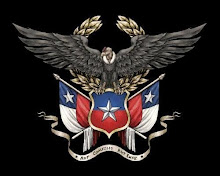Aquí les adjunto el Summary de mi Literature Asigment, la versión cómpleta me la pueden solicitar via mail.
SUMMARY
Starting with the article The New Dimensions Of Space Exploration from the magazine Aviation Week & Space Technology dated November 1, 2004 that brings into consideration the achievements of unmanned mission, especially those by Cassini in Saturn and also an informal comparison of the achievements of the manned Apollo XV and Mars rover activities on surface is made by Jet Propulsion Laboratory. This state that one day of rover operations is equal about one minute of what a human can do on surface.
A space mission depends on a lot of factors. The most important factors are the primary goal, duration, costs and environment. The focus lies on the difference between the precautions that have to be taken for manned or unmanned spaceflight.
A couple of significant mission is taking into account. The article references to Cassini, Apollo XV and the Mars Rovers. These examples are described and analyzed. Also the Hubble Space Telescope has been treated as a combined mission, which would not be possible without the service manned missions from the Space Shuttle.
The analysis tells us that there is a huge difference in weight, which means costs, and duration between manned an unmanned missions. However sometimes manned missions are needed, because robots do not have the ability to interact with its environment. The repair of the Hubble telescope is an example of such a mission. Repairing the Hubble telescope would be too complex for robots.
When taking a look at the missions, it can be concluded there is no real answer to the question whether manned or unmanned flight is more convenient. There are too many factors involved to get a straight answer.
Humans and robots will always compete with each other, because both of them have their advantages. Humans have the benefit that they can adept to certain situation, robots cannot. Since technology is still advancing at a high rate, it is just a matter of time.
Este trabajo fue escrito en TU Delft, por Bart Alewijnse, Alejandro Lopez y Pascal Vasseur
SUMMARY
Starting with the article The New Dimensions Of Space Exploration from the magazine Aviation Week & Space Technology dated November 1, 2004 that brings into consideration the achievements of unmanned mission, especially those by Cassini in Saturn and also an informal comparison of the achievements of the manned Apollo XV and Mars rover activities on surface is made by Jet Propulsion Laboratory. This state that one day of rover operations is equal about one minute of what a human can do on surface.
A space mission depends on a lot of factors. The most important factors are the primary goal, duration, costs and environment. The focus lies on the difference between the precautions that have to be taken for manned or unmanned spaceflight.
A couple of significant mission is taking into account. The article references to Cassini, Apollo XV and the Mars Rovers. These examples are described and analyzed. Also the Hubble Space Telescope has been treated as a combined mission, which would not be possible without the service manned missions from the Space Shuttle.
The analysis tells us that there is a huge difference in weight, which means costs, and duration between manned an unmanned missions. However sometimes manned missions are needed, because robots do not have the ability to interact with its environment. The repair of the Hubble telescope is an example of such a mission. Repairing the Hubble telescope would be too complex for robots.
When taking a look at the missions, it can be concluded there is no real answer to the question whether manned or unmanned flight is more convenient. There are too many factors involved to get a straight answer.
Humans and robots will always compete with each other, because both of them have their advantages. Humans have the benefit that they can adept to certain situation, robots cannot. Since technology is still advancing at a high rate, it is just a matter of time.
Este trabajo fue escrito en TU Delft, por Bart Alewijnse, Alejandro Lopez y Pascal Vasseur




No hay comentarios:
Publicar un comentario